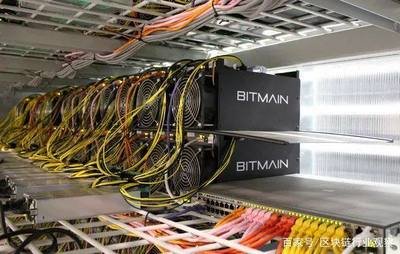As the cryptocurrency landscape continues to shift and evolve, the demand for reliable and efficient mining equipment has surged. Bitcoin (BTC), Ethereum (ETH), and Dogecoin (DOG) remain frontrunners, drawing in both novice and seasoned miners eager to stake their claim in this digital gold rush. Amidst this frenzy, certain brands have distinguished themselves, forging a path through the complex quagmire of mining machinery, hosting solutions, and the broader crypto economy.

The heart of any mining operation lies in its hardware. Miners often find themselves at a crossroads—a multitude of options claim to optimize hashing power while minimising energy consumption. ASIC miners, in particular, are revered for their unparalleled efficiency when it comes to Bitcoin. Devices like the Bitmain Antminer series or Whatsminer are not just popular; they are synonymous with reliability and performance. This trend leads us to consider how the evolution of such devices directly correlates with the ascendance of Bitcoin and its ever-demanding network.
For those venturing into Ethereum mining, things take a different avenue. Graphics Processing Units (GPUs) dominate this realm, given Ethereum’s Proof of Work model, which thrives on parallel processing capabilities. Brands like NVIDIA and AMD not only cater to gamers but have become pivotal players in the Ethereum mining community. The unpredictable nature of ETH’s transition to Proof of Stake adds an element of urgency for miners seeking to maximize their efforts before this transformation solidifies.

The operational aspect of mining can prove overwhelming for newcomers; this is where mining machine hosting comes into play. Dedicated hosting facilities, equipped with optimal cooling and powerful electricity supply, promise to alleviate much of the logistical burden. Mining farms, such as those established by Genesis Mining and Genesis Block, stand out for their ability to scale and adapt to the fluctuating demands of the cryptocurrency market. These farms offer a sanctuary for miners, enabling them to maintain uptime while safeguarding their investment in mining rigs.
While traditional exchanges like Coinbase and Binance facilitate the buying and selling of cryptocurrencies, the mining community has birthed specialized marketplaces focused on hardware and hosting services. For instance, platforms like NiceHash encourage miners to sell their hashing power, generating an appealing avenue for securing profitability despite market volatility. This symbiotic relationship between hardware providers and miners creates an intricate web that fuels the cryptocurrency ecosystem.
As regulations and energy consumption debates loom ever closer, miners are increasingly compelled to think critically about their environmental impact. Sustainable practices are emerging as salient topics, urging companies to innovate. Brands leading the charge include Bitfury and Argo Blockchain, both of which allocate resources towards eco-friendly mining solutions. As the decentralized ethos of cryptocurrencies endures, so too must the commitment to preserving the environment.

In conclusion, the landscape of mining equipment is as dynamic as the cryptocurrencies themselves. With brands contending to deliver unparalleled efficiency, miners must stay informed and adaptable. Embracing diverse hardware solutions, understanding the role of hosting farms, and aligning with sustainable practices has never been more crucial. As the digital currency momentum persists, those who harness the best mining technology and strategic partnerships will likely emerge as the true champions in this captivating arena.
This article dives into evolving mining equipment trends, highlighting innovative tech and energy-efficient models. It offers a surprising mix of established and emerging brands tailored for crypto miners, blending hardware performance with cost-effectiveness and sustainability insights.